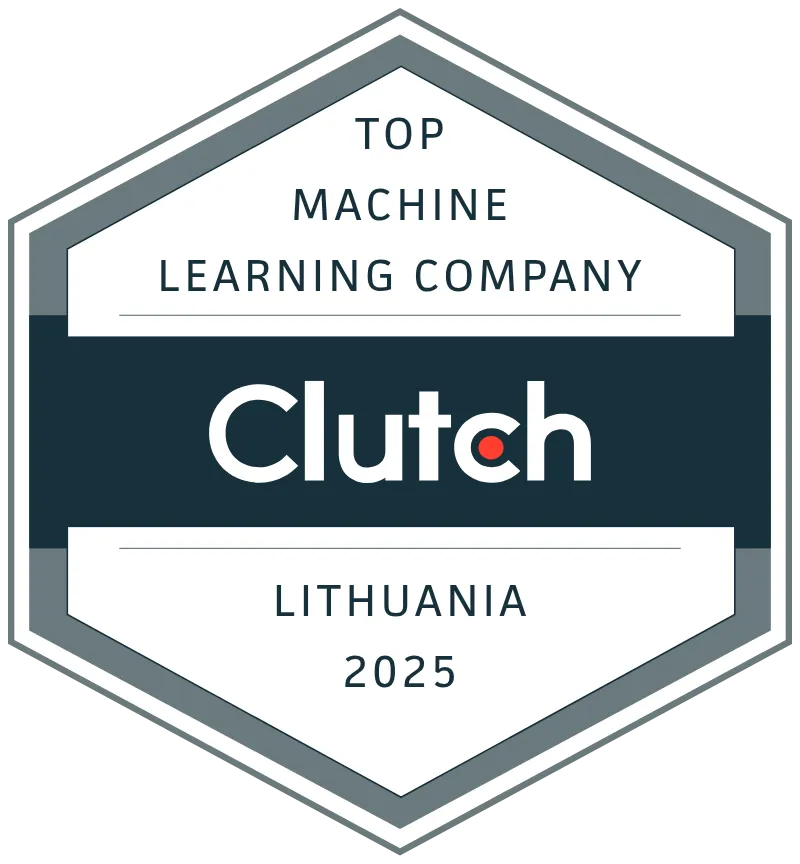How is software created?
Creating software follows a general process with different stages. Here's a simplified explanation of how a usual process will look:
- Analysis: This phase focuses on understanding the problem the software is meant to solve. It involves gathering requirements from stakeholders and defining the functionalities and features.
- Design: This involves creating user interface (UI) mockups, designing the system's data flow, and defining the overall program structure.
- Development (Coding): The actual code is written in a chosen programming language based on the design and functionalities.
- Testing: The code undergoes testing to identify and fix bugs.
- Deployment: Once testing is complete, the software is deployed to the target environment.
- Maintenance: The software is monitored for issues and user feedback after deployment.
Many different tools and methodologies are used in software development, but this process gives you a general idea of how it works.
What is a software development tool?

A software development tool is a specialized program that helps developers at various stages of software development. These tools can improve specific tasks within the development workflow, making the process more efficient and optimized.
Best Software Development Tool
There are many areas you need to consider when developing software. So I have created 4 lists of software development tools that may suit your project. I will go through most of the tools that cover both frontend and backend at the same time and put them into different categories:
- Traditional software development tools
- Low Code software development tools
- No Code software development tools
- AI software development tools
You should be able to find a tool from each list that meets your needs.
Traditional software development tools
There are a lot of traditional software development tools for testing, documentation, version control systems, and more so I have included a few different tools you can use:
GitHub

GitHub is a trusted platform used by top organizations and software developers. It improves developer productivity, security, and collaboration with these features:
- GitHub Copilot: GitHub Copilot assists developers with AI coding suggestions. It speeds up coding by 55%. It integrates with your existing workflows.
- GitHub Actions: Automate your workflow with GitHub Actions. It supports CI/CD for building, testing, and deployment.
- GitHub Codespaces: Codespaces offers instant development environments. You can code, build, and test in seconds.
AWS Cloud9

AWS Cloud9 is a cloud-based integrated development environment (IDE). It allows you to write, run, and debug code using just a browser. Cloud9 includes a code editor, debugger, and terminal. It supports JavaScript, Python, PHP, and more. You can work from anywhere with an internet connection.
Benefits:
- Browser-Based Coding: Write, run, and debug applications with just a browser. No local IDE installation is needed.
- Real-Time Collaboration: Share your development environment and code together in real-time. See each other’s inputs and chat instantly within the IDE.
- Serverless Development: Preconfigured for serverless applications. Test and debug AWS Lambda functions locally.
- Direct Terminal Access: Terminal access to the managed Amazon EC2 instance. Includes a pre-authenticated AWS Command Line Interface.
- Quick Project Start: Prepackaged with tools for over 40 programming languages. Start writing code without needing to install or configure files.
JetBrains

JetBrains IDEs are powerful tools designed to increase developer productivity and code quality. They support a wide range of programming languages and offer various features to optimize coding tasks.
Key Features:
- Code Assistance: JetBrains IDEs provide intelligent code completion, error detection, and suggestions to improve coding speed and accuracy. These features help developers write cleaner and more efficient code.
- Debugging Tools: The built-in debugging tools in JetBrains IDEs allow for easy identification and resolution of code problems.
- Version Control Integration: JetBrains IDEs can integrate with version control systems such as Git, allowing developers to efficiently manage their code versions.
- Collaboration Tools: Features such as Code With Me allow for real-time collaboration on coding projects. This tool is ideal for remote teams and improves teamwork and knowledge sharing.
Low Code software development tools
Low code development platforms are a type of software development tool that allows users to create applications with minimal coding. They achieve this through a variety of features, including:
- Drag-and-drop interfaces: These interfaces allow users to visually build applications by dragging and dropping pre-built components onto a canvas.
- Visual modeling: This allows users to define the data and logic of their applications using a visual representation.
- Component reusability: Allows users to create and reuse components across different applications.
These tools significantly benefit software development teams by enhancing collaborative work, agile project management, sprint planning, and team collaboration.
Here are a few examples of Low Code software development tools:
OutSystems

OutSystems is a low-code platform that enables enterprises to build and manage applications. This platform supports full-stack development, integrating AI and cloud-native architecture to improve the developer experience.
Key Features:
- Full-Stack Development: OutSystems allows for easy development, covering front-end and back-end needs.
- AI Capabilities: The platform incorporates AI tools, assisting in lifecycle management and app development, making it easier to implement AI.
- Pre-built Integrations: OutSystems offers various pre-built integrations.
- Automated Testing/QA: Automated testing and quality assurance tools are included.
- Built-in DevOps: OutSystems has built-in DevOps features.
Mendix

Mendix offers a low-code application development platform. It helps organizations quickly build and deploy enterprise applications. The platform is designed to simplify the development process and improve efficiency.
Key Features:
- AI-powered development: Mendix integrates AI to improve app development. AI services and custom ML models speed up the process and make it easier to build sophisticated, intelligent apps.
- Complete Cloud Choice: Mendix supports one-click deployment to any cloud. It ensures high availability, robust security, and maximum reliability.
- Data Integration: Mendix makes it easy to share data across a connected ecosystem. It ensures data consistency and security across projects and teams.
- Easy-to-use IDE: Mendix Studio Pro provides a comprehensive set of tools. It helps developers tackle complex tasks with ease and efficiency.
No Code software development tools
No code software development tools are platforms that allow users to build applications without writing a single line of code. They use a visual interface, typically drag-and-drop functionality, to build applications. These tools can significantly increase efficiency, productivity, and improve code quality, similar to traditional software development tools.
Here are some of the more popular no code development tools:
Bubble

Bubble is a platform that allows you to design, develop, and launch web applications without writing any code. Whether it’s an enterprise-level web app or the first iteration of a startup, you can build it on Bubble.
Features:
- No Coding Required: Bubble lets you create high-performing apps without coding.
- Ready-to-Go Templates: Customize hundreds of templates with a drag-and-drop editor.
- Design: Use a drag-and-drop editor to adesign production-grade UIs.
- Logic: Implement full-stack functionality using simple language.
- Data: Collect, organize, and utilize app data easily.
- Collaboration: Use built-in version control for team projects.
Airtable

Airtable is an app-building platform designed for teams to build custom business apps without writing code. The platform provides a way to manage workflows, connect data, and improve operations to keep the work environment efficient and organized.
Key Features:
- App-building: Airtable's app-building tools allow teams to create custom apps to meet their specific business needs, with no coding required. It's easy to get started and easy to use.
- Automation: Set up automations to save time and increase productivity.
- Interface designer: Design custom interfaces to present data in the most useful way for your team. .
- Views and Reporting: Customize data views and generate reports to measure and analyze performance.
- Integration with Other Tools: Integrate with popular tools like Slack, Google Drive, and Salesforce to improve your workflow.
Glide

Glide is a no code app development platform that helps businesses build custom apps without coding. It connects existing data and tools to make app development easy and efficient.
Key Features:
- Data Integration: Glide works with your current business data, from spreadsheets to databases. This makes it simple to start building apps with the information you already have.
- Responsive Design: Glide apps automatically adjust to any device.
- Custom Workflows: Create complex, multi-step actions that update your data and connect your app to other tools.
- Cost Efficiency: By using one platform to build various solutions, you reduce the need for multiple tools.
- User-Friendly Interface: Glide's software is attractive and easy to use. Your team will enjoy the tools you create for them.
AI Software development tools
At the moment there are no tools that can build software from scratch, but there are AI assistants that can help with software development, and there are also some tools that can build websites from scratch, so I'll include an example of that as well.
Umso

Umso is an AI-powered website builder designed for quick and easy website creation without the need for design or coding skills. It's ideal for businesses looking to efficiently build an online presence.
Features include:
- Blogs: Create and manage blog content effortlessly. Boost your site's SEO and reach with this simple blogging tool.
- User Management: Manage permissions and roles with fine-grained controls.
- AI Tools: Generate content and designs with AI assistance.
- File Libraries: Organize and manage your media assets efficiently.
- High-Quality Assets: Access a library of high-quality design assets. Improve your website with professional visuals and graphics.
Tabnine

Tabnine is an AI code assistant designed to help with software development. It helps developers generate code, saving time and reducing repetitive tasks. Tabnine integrates with many popular IDEs and provides real-time code suggestions and improvements.
Key Features:
- AI Code Generation: Tabnine generates high-quality code from plain text.
- Context-Aware Suggestions: The tool offers personalized suggestions based on your existing code and patterns.
- IDE Support: Works seamlessly with IDEs like VS Code, IntelliJ, and others.
- Code Privacy: Ensures your code remains private with zero data retention and secure deployment options.
- Risk Protection: Offers protection from IP issues with models trained only on permissive sources.
Mintlify

Mintlify Doc Writer is a tool designed to automate code documentation, saving developers time and effort. It integrates smoothly with popular code editors, making documentation easy.
Features include:
- Automated Documentation: Mintlify generates accurate and detailed docstrings for your code.
- Multi-language Support: The tool supports various programming languages, including JavaScript, TypeScript, and Python.
- Easy Integration: Mintlify integrates with popular code editors like VS Code and IntelliJ. You can start generating documentation with just a few clicks.
- Real-time Results: See the documentation generated instantly as you code.
What is the easiest software tool to learn?

Well, if you consider how much experience you need, No Code tools are the easiest to learn for software development because they do not require any coding knowledge. But if you have at least some coding knowledge, it can be extremely helpful to understand how No Code tools work.
However, as with all tools, once you have decided to use No Code platforms for software development, you will quickly understand that they do have a learning curve if you want to create more complex applications.
Try tools like Flutterflow, and Bubble as they are some of the best No Code tools out there. You may find them much more useful for software development than traditional tools.
Final thoughts

Good software development tools are key to success. Knowing the tools' capabilities helps make the development process better. This guide covers traditional, low code, no code, and AI tools. Each category offers unique features that can help you work more productively and write better code.
For those new to coding or looking to speed up development, low code and no code platforms offer alternatives. Tools like Bubble, Airtable, and Glide allow users to build applications with minimal coding. They are ideal for quick custom software development for startups.




.svg)




